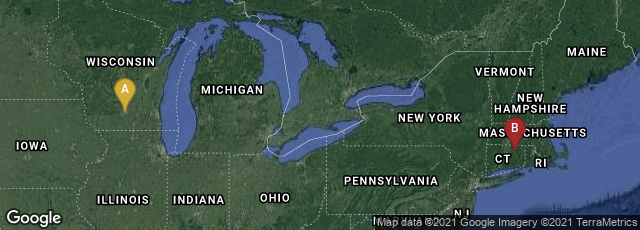
A: Madison, Wisconsin, United States, B: Mansfield, Connecticut, United States
In the 1970s American computer artist Myron W. Krueger, working at the University of Wisconsin-Madison and the University of Connecticut, Storrs, Mansfield, Connecticut, developed Videoplace, which allowed users to interact with virtual objects for the first time. It created an artificial reality that surrounded its users, and responded to their movements and actions, without being encumbered by the use of goggles or gloves.
"The Videoplace used projectors, video cameras, special purpose hardware, and onscreen silhouettes of the users to place the users within an interactive environment. Users in separate rooms in the lab were able to interact with one another through this technology. The movements of the users recorded on video were analyzed and transferred to the silhouette representations of the users in the Artificial Reality environment. By the users being able to visually see the results of their actions on screen, through the use of the crude but effective colored silhouettes, the users had a sense of presence while interacting with onscreen objects and other users even though there was no direct tactile feedback available. The sense of presence was enough that users pulled away when their silhouettes intersected with those of other users. The Videoplace is now on permanent display at the State Museum of Natural History located at the University of Connecticut" (Wikipedia article on Videoplace, accessed 10-22-2014).
In 1983 Krueger published a book entitled Artificial Reality, updated in a second edition in 1991. This work is one of the pioneering treatises on virtual or artificial reality.